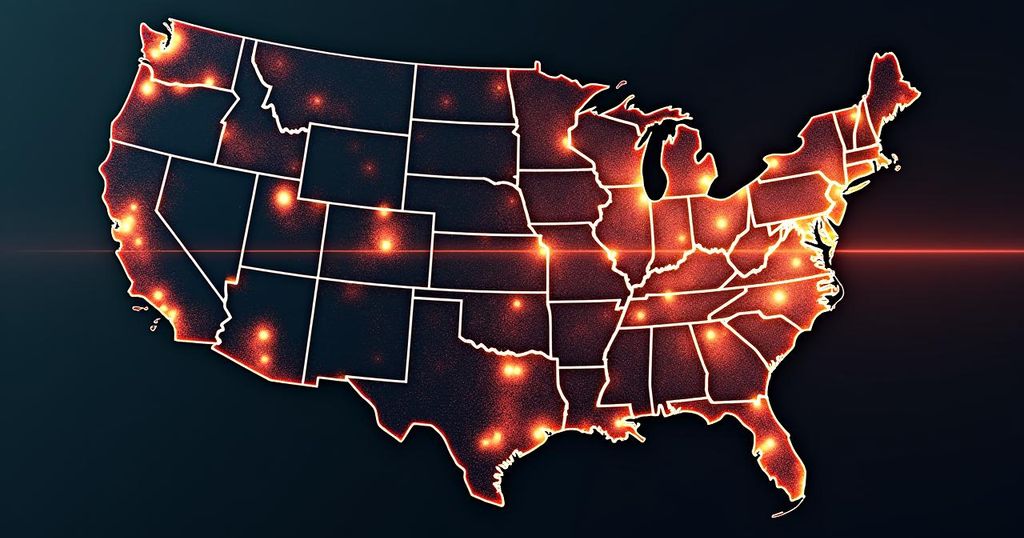Recent Surge in Seismic Activity Across the United States

A 4.1-magnitude earthquake occurred in Dillon, Montana, on October 7, 2023, at a depth of 13.7 kilometers, with 120 reports of tremors felt. This event is part of a series of earthquakes across the United States and internationally, highlighting the persistent nature of seismic activity.
On October 7, 2023, a 4.1-magnitude earthquake was documented in Dillon, Montana, according to data from the United States Geological Survey (USGS). The earthquake occurred at a depth of 13.7 kilometers (approximately 8.5 miles), prompting 120 reports from individuals who felt the tremor at the time of this publication. This seismic event in Montana followed a series of earthquakes across the United States. Specifically, on October 5, a 3.7-magnitude earthquake was recorded in Petrolia, California, at a depth of 10.0 kilometers (about 6.2 miles). Prior to that, a 2.5-magnitude earthquake struck Tennessee on October 3, centered at a depth of 9.7 kilometers (approximately six miles). In addition, a 3.5-magnitude earthquake occurred along the Oregon coast on October 2, with a depth of 13.5 kilometers (around 8.4 miles). This tremor was preceded by another 3.5-magnitude earthquake in California, which occurred on October 1 in Avenal at a depth of 11.4 kilometers (approximately seven miles). The earthquake activity further traces back to a 2.7-magnitude event in Idaho on September 30, centered in Bonners Ferry at a depth of 9.1 kilometers (approximately 5.7 miles). Additionally, a significant 6.3-magnitude earthquake was reported off the coast of Mauritius on September 26, at a depth of 10.0 kilometers (about six miles). Alongside these events, on September 16, a 5.2-magnitude earthquake occurred in Romania at a depth of 133.5 kilometers (approximately 83 miles), and a concurrent 5.1-magnitude earthquake was recorded in Texas, centered in Ackerly at a depth of 8.2 kilometers (about 5.1 miles). This was just one day after a 3.4-magnitude earthquake in Kansas, centered in Danville at a depth of 4.9 kilometers (approximately three miles). Additionally, a 6.3-magnitude earthquake shook the Northern Mariana Islands on September 16, centered in Saipan at a depth of 42.9 kilometers (about 26.7 miles). Lastly, a preceding 3.4-magnitude earthquake struck Malibu, California, on September 13, with a depth of 10.6 kilometers (approximately 6.6 miles).
The occurrence of earthquakes is a significant geological phenomenon that raises interest in seismic activity monitoring. Earthquakes can range in magnitude, with the United States Geological Survey providing essential data regarding their frequency, location, and intensity. Understanding the seismic activity in diverse regions, from Montana to California and even internationally, is crucial for preparedness, response, and mitigation of potential impacts on communities.
In summary, the recent earthquake activity across the United States and globally highlights the constant seismic threats that various regions face. The 4.1-magnitude quake in Montana adds to a sequence of significant tremors observed in California, Tennessee, Idaho, and other locations, emphasizing the need for ongoing monitoring and preparedness in seismic zones.
Original Source: www.iheart.com








